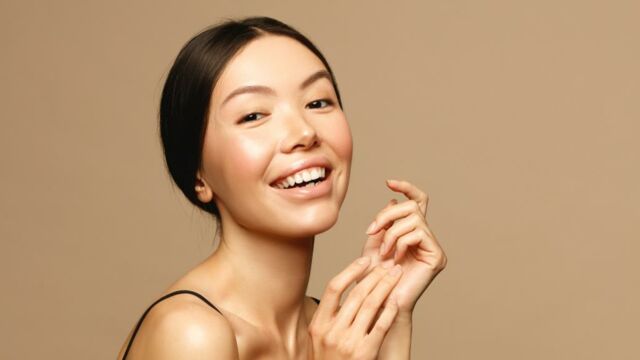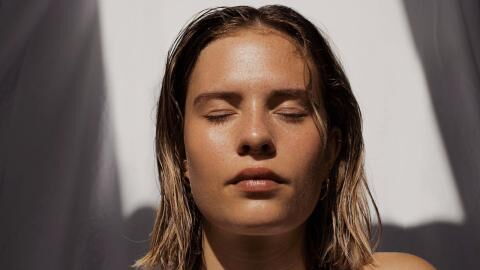The idea of taking a razor to your face can seem intimidating; what if you end up with stubble? What if your hair really does grow back thicker? What if you miss and shave off half your eyebrow Angus, Thongs and Perfect Snogging style? While these fears are very valid, rest assured that dermaplaning isn’t likely to result in any of them, and it’ll leave your skin looking fresh and baby smooth.
Discover our latest podcast
At-home dermaplaning became huge in 2020, partly because of beauty trends and partly because access to beauty parlours was all but taken away due to lockdowns. But, unlike doing your own nails or cutting your own bangs, dermaplaning is simple, and once you’ve figured out how to do it at home, you’ll never want to pay the £40 to £70 salon prices ever again.
So, we’ve compiled a complete guide to dermaplaning, so you can safely execute this simple procedure and give yourself smoother and younger-looking skin.
What is dermplaning?
Dermaplaning is a skincareregimen that involves using an exfoliating scalpel to shave the face. The act is typically carried out by beauty therapists, aestheticians and dermatologists, who use feathery strokes to shave off the topmost layer of skin, taking with it dead skin cells and the fine hair we know as peach fuzz. In the end, your face will be left as smooth as a baby’s bottom, a massive bonus for flawless makeup application.
Can everyone dermaplane?
Most people are great candidates for dermaplaning, given we all have dead skin cells and peach fuzz to slough off our faces. But, a few people are better off with more gentle exfoliants so as not to irritate their skin. So, if you’re prone to sensitive skin, acne, eczema, dermatitis or any kind of rashes, then dermaplaning may not be your best option.
What are the benefits of dermaplaning?
As you’ve probably guessed, dermaplaning is an exfoliating procedure that removes dead skin cells and fine hairs. But, this unique exfoliating technique has a few additional benefits too:
A glowing complexion:
Dead skin cells and the outermost layer of skin can give the face a dull complexion, so it’s no surprise that shaving off this debris will leave your skin glowing.
Your skincare will penetrate deeper
The layer of dead skin cells and debris creates a layer between your skincare and the deeper layers of your skin. By dermaplaning, you’re removing this layer and potentially allowing your products to work better and penetrate deeper.
Your makeup will go on flawlessly
As there's no dead skin cells or hairs to cling to, your makeup will go on much smoother.
What are the risks of dermaplaning?
Dermaplaning is a low-risk procedure, but like any shaving activity, it brings a small risk of irritation, redness, ingrown hairs, infection, scarring, and patchy pigmentation. However, these side effects are often rare and getting your dermaplaning done through a professional will further help reduce these risks.
How to dermaplane at home
Following a cautious technique, dermaplaning can be easily done at home, and dermablades or little eyebrow razors can usually be purchased at your local pharmacy.
- Make sure your skin is clean and very dry.
- Starting at the top of the ear, pull the skin tight and very lightly move the razor downwards in short strokes at a 45-degree angle until you reach the jawline and chin.
- Continue the process moving from the top of the ear inwards to reach the cheeks and upper lip.
- Then, move to the sides of the head by the eyes and the forehead, avoiding the hairline, eyelids and nose.
- Lastly, shave from the jawline down to the neck.
The all-important aftercare
Just because you’re finished shaving doesn’t mean the job is done. After dermaplaning, follow up with the rest of your skincare routine, finishing with a moisturiser to rehydrate and replenish the skin. Additionally, it’s imperative to follow up with an SPF during the day to protect the skin from irritation and reduce the chances of UV damage.















